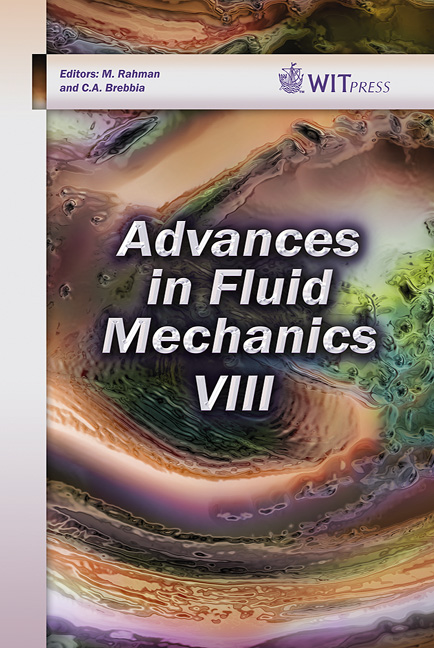A Universal Multi-dimensional Charge And Mass Transfer Model
Price
Free (open access)
Transaction
Volume
69
Pages
11
Page Range
181 - 191
Published
2010
Size
1,155 kb
Paper DOI
10.2495/AFM100161
Copyright
WIT Press
Author(s)
G. Kennell & R. W. Evitts
Abstract
A new approach has been developed for modelling the transport of charge and mass through electrolytes. This approach utilizes a dynamically computed electric field that contributes to the transport of charged species in much the same way a flow field contributes to the transport of mass. Since a multidimensional electric field is computed, the effects of this field on redox reactions occurring in the electrolyte or at the interface of an electronic and ionic conductor can be modelled. Transport of species due to diffusion and convection is also considered, and the overall transport system is modelled using a control volume technique with a modified Peclet number. Electroneutrality and the conservation of species are incorporated into the model. This method produces a universal model capable of predicting one, two, or three-dimensional mass and charge transport for electrochemical phenomena where macroscopic anodic and cathodic couples exist. This model has the potential to simulate forms of localized corrosion and energy storage and generation applications such as batteries and fuel cells. The theoretical development and validation of this new model for a two dimensional case study is presented. Keywords: electrochemistry, modelling, computational fluid dynamics, control volume technique, polarization, electric field, electrolyte. 1 Introduction The open literature contains many articles on modelling of charge and mass in numerous electrochemical systems. Some examples of these systems include: fuel cells, batteries, pitting corrosion, and crevice corrosion. In such systems the transport of charged species is usually significantly affected by the electric field.
Keywords
electrochemistry, modelling, computational fluid dynamics, control volume technique, polarization, electric field, electrolyte





